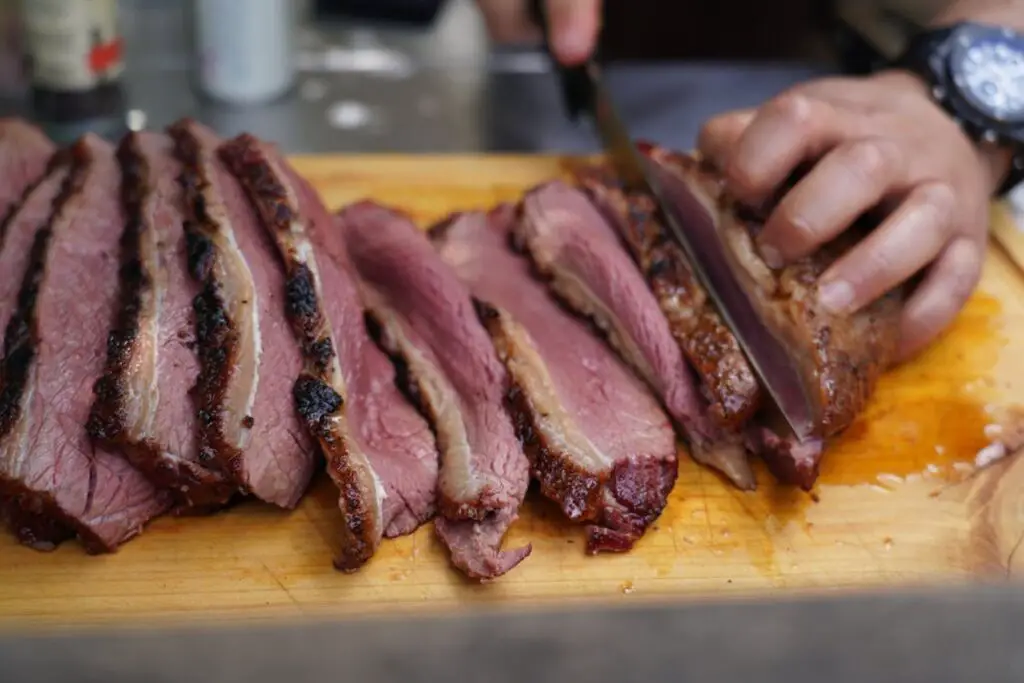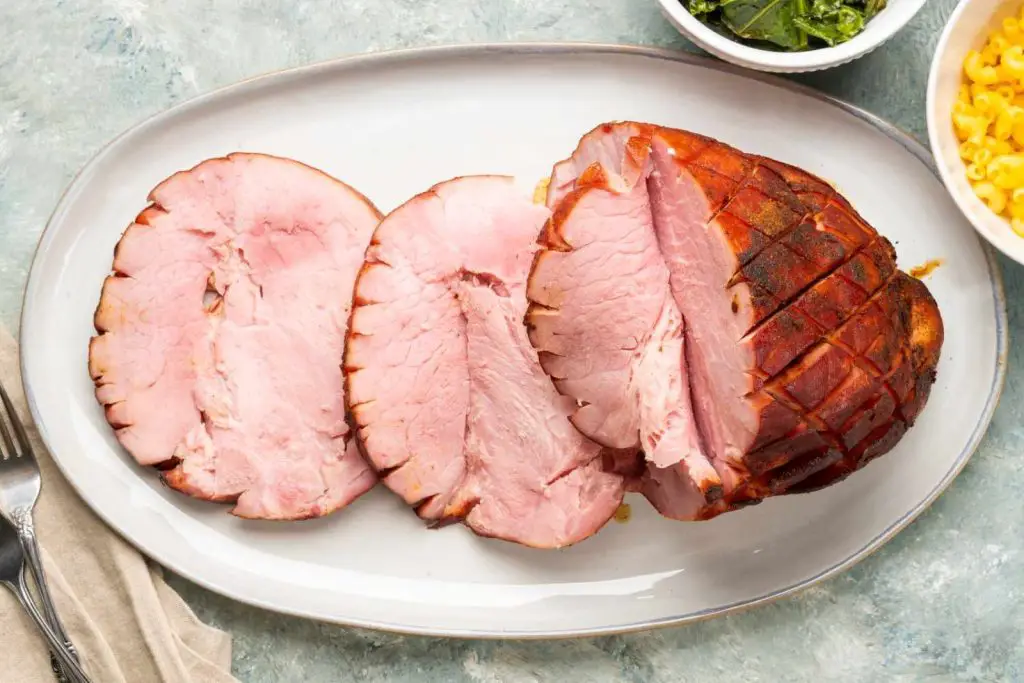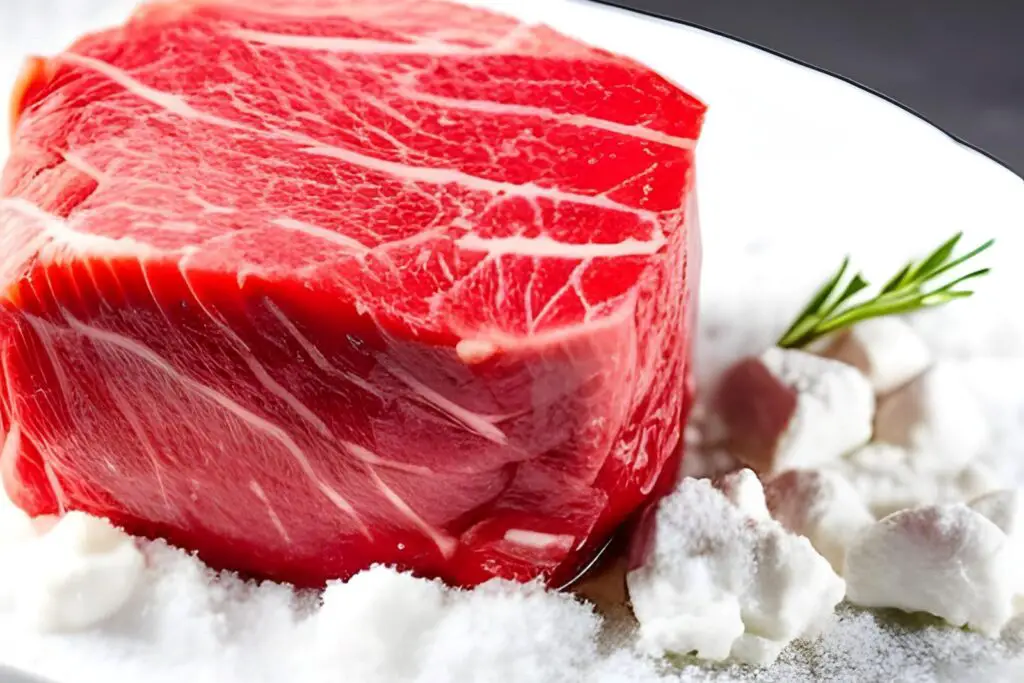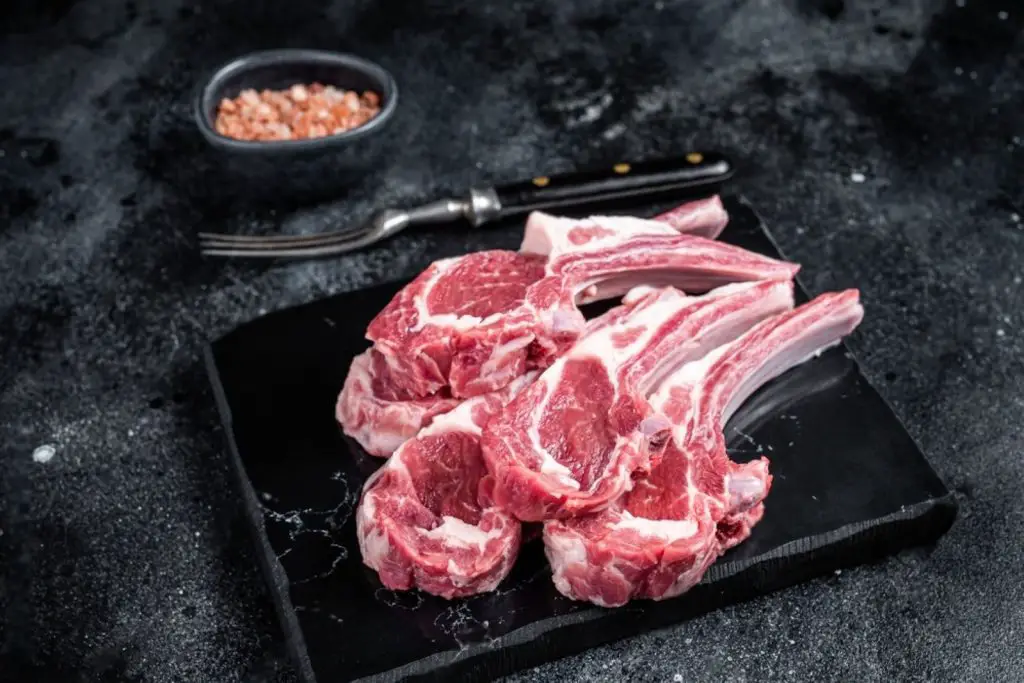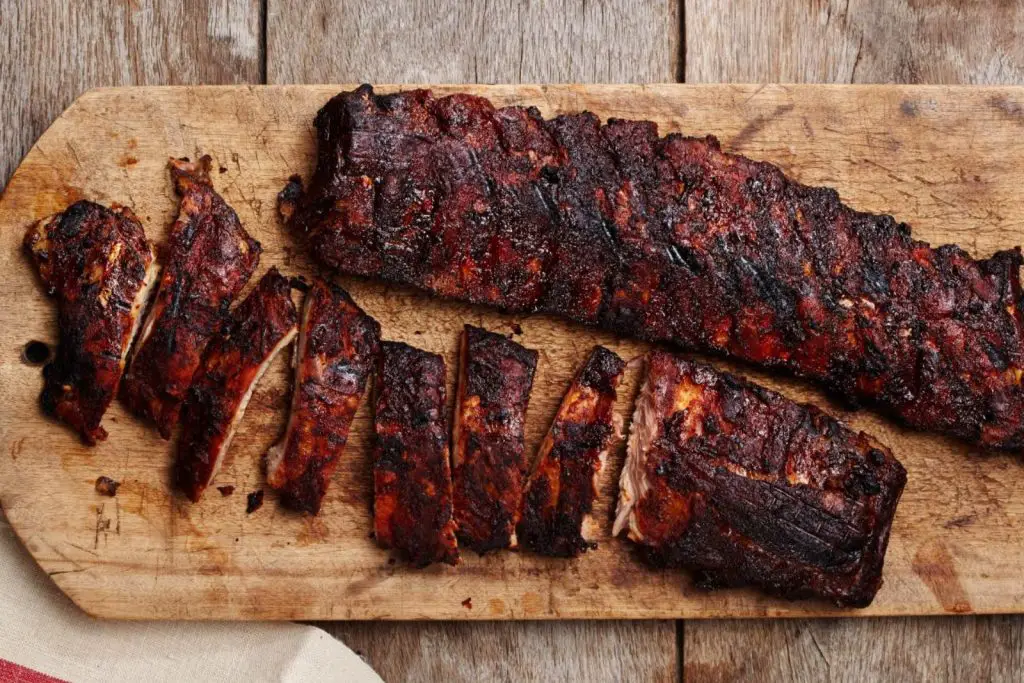
Chicken breast is a versatile and widely consumed protein that is both lean and packed with nutrients. It is the most tender and lean part of the chicken, making it a popular choice for various recipes. With its mild flavor and versatile nature, chicken breast can be grilled, baked, sautéed, or used in stir-fries, salads, sandwiches, and more. While fresh chicken breast is readily available, freezing it can be a convenient way to preserve its quality and extend its shelf life. Freezing chicken breast helps maintain its flavor, texture, and nutritional value, ensuring that you have a readily available source of protein even when fresh chicken is not accessible. In the following section, we will explore the process of freezing chicken breast and some tips for ensuring optimal results.
Here are the simple steps to freeze chicken breasts:
Step 1: Prepare the chicken breasts
Properly preparing your chicken breasts before freezing them is essential to maintain their quality and taste. Follow these steps to ensure that your chicken breasts are ready for the freezer.
First and foremost, check the freshness of the chicken. Look for any signs of spoilage such as an off smell or slimy texture. It’s important to freeze chicken breasts when they are at their freshest to ensure optimal flavor and texture when thawed and cooked.
Once you have confirmed that the chicken is fresh, take a moment to inspect the breasts. Trim off any excess fat or skin. While some fat is desirable for flavor, too much fat can lead to rancidity during freezing and affect the taste of the chicken. Trimming excess fat and skin also helps maintain the overall quality of the chicken breasts during the freezing process.
At this stage, you can also choose to season or marinate the chicken breasts. Seasoning with salt, pepper, and other spices can enhance the flavor of the chicken. Marinating the chicken in a mixture of herbs, spices, and a liquid of your choice adds extra flavor and tenderness. Keep in mind that marinated chicken may require longer freezing and thawing times due to the additional moisture.
To season or marinate the chicken, place the breasts in a bowl or a resealable plastic bag and apply the desired seasonings or marinade. Ensure that the chicken is evenly coated and allow it to marinate for the recommended time, typically a few hours, or overnight in the refrigerator.
Step 2: Wrap the chicken breasts
Properly wrapping your chicken breasts before freezing is a crucial step in maintaining their quality and preventing freezer burn. Follow these steps to ensure that your chicken breasts are tightly wrapped and protected.
Begin by taking each chicken breast and placing it in the center of a piece of plastic wrap. The size of the plastic wrap should be large enough to fully enclose the chicken breast. Wrapping each chicken breast individually helps maintain its shape and prevents them from sticking together during freezing.
Gently pull the edges of the plastic wrap up and over the chicken breast, covering it completely. Make sure to wrap the chicken breast as tightly as possible without squishing or distorting its shape. This tight wrapping helps minimize the amount of air surrounding the chicken, reducing the risk of freezer burn and maintaining its moisture content.
As you wrap the chicken breast, ensure that there are no gaps or openings in the plastic wrap where air can enter. Excess air trapped inside the wrapping can contribute to freezer burn and result in a loss of quality. Press the plastic wrap firmly against the chicken breast to eliminate any trapped air and create a snug seal.
Once the chicken breast is tightly wrapped in plastic wrap, you can also consider using a second layer of protection. This can be achieved by placing the plastic-wrapped chicken breast in a freezer-safe resealable bag. Squeeze out any excess air from the bag before sealing it, further reducing the risk of freezer burn and ensuring a tight seal.
Step 3: Use freezer-safe packaging
After tightly wrapping your chicken breasts with plastic wrap, it’s important to provide them with an additional layer of protection using aluminum foil. The foil serves as a second barrier against freezer burn and helps preserve the texture and flavor of the chicken breasts. Here’s why using freezer-safe packaging is essential:
- Freezer burn prevention: Freezer burn occurs when food is exposed to air inside the freezer, causing dehydration and oxidation. By wrapping the plastic-wrapped chicken breasts with aluminum foil, you create an extra layer of protection that helps prevent air from reaching the chicken. This significantly reduces the chances of freezer burn, preserving the moisture content and overall quality of the chicken breasts.
- Odor prevention: The use of aluminum foil helps contain any strong odors from the chicken breasts. It acts as a barrier, preventing the transfer of odors between the chicken and other foods in the freezer. This is particularly beneficial if you have aromatic or strongly flavored items stored alongside the chicken breasts. By minimizing odor transfer, you ensure that the chicken retains its natural flavor and doesn’t absorb any unwanted smells.
- Enhanced insulation: Aluminum foil provides an additional layer of insulation for the chicken breasts. It helps regulate temperature fluctuations and maintain a more stable freezing environment. This insulation helps to prevent temperature spikes and fluctuations that can negatively impact the quality of the chicken.
When wrapping the plastic-wrapped chicken breasts with aluminum foil, make sure to cover them completely and seal the edges tightly. This double-layered packaging provides an effective shield against freezer burn, odors, and temperature changes, ensuring that your chicken breasts stay fresh and flavorful during their time in the freezer.
Step 4: Label and date the packages
Properly labeling and dating the packages of your frozen chicken breasts is a crucial step to ensure organization and freshness. By clearly indicating the date of freezing and providing a brief description of the contents, you can easily keep track of your chicken breasts and make informed decisions when selecting and using them. Here’s why labeling and dating the packages is important:
- Freshness tracking: When you freeze chicken breasts, it can be challenging to remember exactly when you placed them in the freezer. By labeling the packages with the date of freezing, you establish a clear record of when the chicken breasts were stored. This information allows you to monitor their freshness and helps you consume the oldest packages first to prevent any potential waste.
- Inventory management: Labeling the packages with a brief description of the contents provides valuable information about what is inside each package. This is especially useful when you have multiple packages of chicken breasts with different seasonings, marinades, or cuts. A clear label allows you to quickly identify and select the desired chicken breasts for your recipes, saving time and minimizing confusion.
- Rotation and usage: By knowing the date of freezing, you can implement a “first in, first out” (FIFO) system when using your frozen chicken breasts. This means you can prioritize using the oldest packages before moving on to the newer ones. Properly labeled packages help you keep track of which chicken breasts to use first, ensuring that none of them remain in the freezer for an extended period and potentially lose their quality.
To label the packages, use a permanent marker to write the date of freezing in a clear and visible manner. Include a brief description of the contents, such as “marinated chicken breasts” or “seasoned boneless chicken breasts.” Write the labels directly on the aluminum foil or freezer-safe adhesive labels affixed to the packages.
Step 5: Store in the freezer
After properly preparing and packaging your chicken breasts, it’s time to store them in the freezer to ensure long-term preservation. Here’s how to effectively store your chicken breasts in the freezer:
- Choose an appropriate freezer location: Select a suitable spot in your freezer where the temperature remains consistently below 0 degrees Fahrenheit (-18 degrees Celsius). It’s important to maintain a freezing temperature to prevent any spoilage or bacterial growth. Check your freezer’s user manual or consult the manufacturer’s guidelines for the optimal temperature settings.
- Arrange the chicken breasts in a single layer: Place the wrapped chicken breasts in a single layer on a flat surface, such as a baking sheet or a freezer-safe tray. This initial arrangement allows for quicker freezing and prevents the chicken breasts from sticking together. Ensure that there is enough space between each chicken breast, allowing cold air to circulate them. Proper air circulation facilitates faster freezing and helps maintain the quality of the chicken breasts.
- Partially freeze before rearranging: Leave the chicken breasts in the freezer until they are partially frozen. This usually takes a few hours, depending on the size and thickness of the chicken breasts. Partially freezing them individually ensures that they retain their shape and don’t become clumped together when stacked or rearranged.
- Stack or rearrange for space optimization: Once the chicken breasts are partially frozen, you can stack or rearrange them in a way that maximizes the available space in your freezer. If stacking, place a layer of parchment paper or plastic wrap between each chicken breast to prevent them from sticking together. Alternatively, you can use freezer-safe containers or resealable bags for storage, keeping in mind to remove as much air as possible to minimize the risk of freezer burn.
- Maintain proper storage organization: To easily access the chicken breasts and maintain an organized freezer, consider grouping them based on the date of freezing or type of seasoning/marinade. This allows you to locate the desired packages when needed quickly.
By following these steps, you ensure that your chicken breasts are stored in an ideal freezing environment, frozen individually for proper shape retention, and organized for easy access. This will help preserve their quality, flavor, and texture for an extended period, allowing you to enjoy delicious chicken dishes whenever you desire.
Other related questions
How do you thaw chicken breasts?
The best way to thaw chicken breasts is to place them in the refrigerator and allow them to defrost slowly. This method ensures that the chicken stays at a safe temperature while thawing and minimizes the risk of bacterial growth. Allow approximately 24 hours for every 5 pounds of chicken to fully thaw in the refrigerator. If you need to thaw the chicken more quickly, you can use the cold water method by placing the chicken in a leak-proof bag and submerging it in cold water. Change the water every 30 minutes until the chicken is fully thawed. Avoid using hot water or leaving the chicken at room temperature to thaw, as these methods can promote bacterial growth and foodborne illness.
How long can I freeze chicken breasts in the freezer?
Chicken breasts can be safely stored in the freezer for up to nine months. However, for optimal quality, it is recommended to consume them within three to six months. Over time, frozen chicken breasts may start to develop freezer burn or lose their flavor and texture. It’s important to adhere to proper storage practices, such as using airtight packaging and maintaining a consistent freezing temperature, to maximize their shelf life. Always check for signs of freezer burn or spoilage before consuming frozen chicken breasts.
Can you refreeze chicken breasts that have been previously thawed?
It is generally not recommended to refreeze chicken breasts that have been previously thawed, as it can lead to a loss of quality and safety issues. Freezing and thawing can cause changes in the texture and moisture content of the chicken, and repeated cycles can result in freezer burn and off-flavors. Additionally, each time the chicken is thawed, it provides an opportunity for bacteria to grow, which can increase the risk of foodborne illness. It is best to cook the chicken after it has been thawed and use any leftovers within a few days or freeze them immediately for future use.
How do you tell if frozen chicken breasts have gone bad?
If frozen chicken breasts have gone bad, you may notice an off smell or discoloration. The chicken may have a grayish or yellowish color, or the surface may appear slimy or sticky to the touch. Ice crystals may have formed on the chicken, indicating that it has been stored for an extended period. If you are unsure about the quality of the chicken, it’s best to discard it to avoid the risk of foodborne illness. Always check the expiration date and storage instructions before freezing and consuming chicken breasts.
Can you use frozen chicken breasts with fresh ones?
Yes, you can use frozen chicken breasts with fresh ones, but it may result in uneven cooking. The frozen chicken will lower the temperature of the other ingredients in the dish and may require additional cooking time to reach the desired internal temperature. For best results, it’s recommended to thaw the frozen chicken separately and use it in a recipe specifically designed for frozen chicken. Alternatively, you can cook the frozen chicken separately before adding it to the dish. Mixing fresh and frozen chicken is generally not recommended for food safety reasons, as the thawing process can promote bacterial growth on the fresh chicken.
Can you cook frozen chicken breasts without thawing them first?
Yes, you can cook frozen chicken breasts without thawing them first, but it will take longer and may result in uneven cooking. For best results, use a meat thermometer to ensure the internal temperature of the chicken reaches 165°F. Preheat the oven or skillet to allow for even cooking, and add a few extra minutes to the cooking time to compensate for the frozen state of the chicken. Be aware that cooking frozen chicken breasts may result in a drier texture compared to thawed chicken.
Can you freeze chicken breasts that have already been cooked?
Yes, you can freeze cooked chicken breasts. It’s a great way to preserve leftover cooked chicken and reduce food waste. Allow the chicken to cool completely before placing it in an airtight container or freezer bag. Remove as much air as possible to prevent freezer burn. Cooked chicken can be frozen for up to 2-6 months, depending on the storage conditions. When reheating, ensure the chicken reaches an internal temperature of 165°F to kill any potential bacteria.
Can you freeze chicken breasts with skin on?
Yes, you can freeze chicken breasts with skin on, but it’s generally not recommended as the skin can become rubbery and lose its crispiness during the freezing process. If you prefer to freeze chicken breasts with skin on, it’s best to remove the skin before freezing and then add it back on after thawing and cooking. This will ensure that the skin stays crispy and flavorful. Alternatively, you can freeze the chicken without the skin and then add crispy skin as a topping before serving.
Can you freeze chicken breasts with bones in them?
Yes, you can freeze chicken breasts with bones in them, but it’s generally not recommended. The bones can cause the chicken to freeze unevenly, leading to texture and quality issues. Additionally, bones can puncture packaging materials and cause freezer burns. If you must freeze chicken breasts with bones, it’s best to wrap them tightly in plastic wrap or aluminum foil, and then place them in an airtight container or freezer bag to prevent any moisture or air from getting in. However, it’s generally recommended to remove the bones before freezing for the best results.
Can you freeze chicken breasts that have been cut into strips or cubes?
Yes, you can freeze chicken breasts that have been cut into strips or cubes. Ensure that the chicken is cut into uniform sizes for even cooking and to prevent overcooking or undercooking. Use airtight containers or freezer bags to store the chicken, removing as much air as possible to prevent freezer burn. Label the containers or bags with the contents and date for easy identification. When thawing, allow the chicken to defrost completely in the refrigerator before cooking. Frozen chicken strips or cubes can be used in stir-fries, salads, and other dishes for added convenience.
Can you freeze marinated chicken breasts?
Yes, you can freeze marinated chicken breasts. Marinating the chicken before freezing can infuse it with extra flavor. Ensure the chicken is well-coated with the marinade and then place it in an airtight container or freezer bag. Squeeze out as much air as possible before sealing to prevent freezer burn. Marinated chicken can be frozen for up to 2-3 months. When thawing, allow the chicken to defrost thoroughly in the refrigerator before cooking.

